In the debate over the new race rules, Polaris Race Manager Tom Rager Jr. is often villainized by those against the rule as the man who powered it through the system. Rager quickly deflects such talk, noting that International Snowmobile Racing (ISR) rules changes are made by the circuits that host races, and he doesn’t have a vote. That said, he thinks the rule is instrumental in the long-term future of the sport, and he was a willing participant when asked to be the “Pro” side of this debate. But first, some background on Rager. To see the counterpoint to this argument as represented by Steve Scheuring, click here. To see background on this three-part series, click here.
Tom Rager Jr. grew up around snowmobile racing – his father, Tom Sr., began oval racing sleds in the 1970s when the family lived in Nebraska, and the love of the sport drove the family to Wisconsin and the ownership of a Ski-Doo dealership in the late 1970s and early 1980s. For Tom Jr., he remembers riding sleds daily in the winter as a child in Wisconsin and then getting a job at a dealership and marina in high school and through his early 20s. The racing bug bit Tom Jr. in 1991, when he started a five-year drag racing run that ended when he got hired by Ski-Doo in 1996. He started as a technical support rep for Ski-Doo, but his passion for racing continued as a wrench, first for Guy Parquette and Glenn Kafka at the much decorated Smith Brothers grass and ice racing team, and later, from 1996 to 2000, as one of the wrenches behind Chad Ramesh’s successful oval racing team. In 2000, though, both Ragers and Bill Rader were hired away from Ski-Doo by Polaris, and Rager Jr. has been a part of Polaris’ race effort ever since. Aside from the full-time tech support job serving all racers, he also wrenched for Levi LaVallee, Matt Judnick and Ross Martin over the years before taking over the role of Polaris Race Manager when his father retired in 2013.
What follows are transcripts of an hour-long phone conversation.
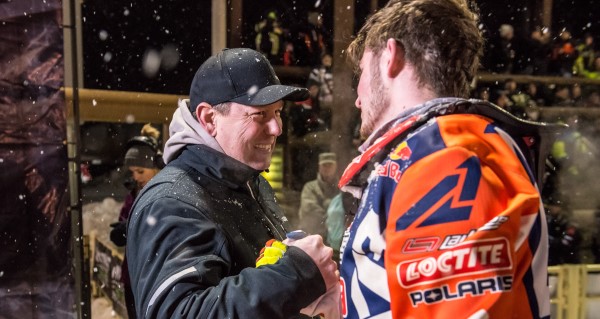
SNOW GOER: Why was this move toward stock sleds with aftermarket silencers in what used to be the Pro Open class important for snowmobile racing?
RAGER: “For years, everybody in the sport has been talking about the declining number of entries in Pro Open, and for years we’ve been throwing around ideas about what we can do to get more entries in Pro Open. We have tried a few different things, and it’s probably slowed the bleeding down, but it hasn’t stopped the bleeding. So Ken Avann from the CSRA [Canadian Snowcross Racing Association] a year ago proposed the idea of going to a stock sled at the affiliate ISR meeting. At that point, it got voted down. It was such a radical idea, and even I spoke out against it because, at that time I wasn’t prepared and Polaris wasn’t – we didn’t have time really to vet that idea and understand what that all meant. I needed to talk to engineering, to marketing, so I spoke out against it.”
SNOW GOER: So what changed?
RAGER: “At one point during the year, we were down to 12 Pro Open riders, and we had learned that Carlson Motorsports was going to pull out of the sport, and the same with Leighton Motorsports. And there was somewhat of a panic in the pits: [People were saying] ‘What are we going to do, this is going to kill us for Pro Open riders.’ I made the statement to a couple of people, ‘Boy, if we were smart, we would go run stock sleds and that would allow more guys to be competitive and get into Pro Open.’ And that’s all I said, but it ran through the pits like wildfire and before I knew it, everyone’s coming to me and asking, ‘What are you trying to push here?’ But I just threw the idea out there that Ken Avann had brought it up last year, and since then I had a chance to talk about it with our engineering group and marketing group and my boss, and we liked the idea. We felt like it could save snocross and get us more entries in Pro Open, which is what everybody’s been asking for for the last 10 years.”
SNOW GOER: To make sure we state it correctly, the rules for the new Pro class states that the sleds will be the same as Pro Lite except a Pro Open guy can block his headlight, right?
RAGER: “The only difference is the Pro Open guys can obscure their headlight. You can’t remove the headlight. That’s because two of the manufacturers can’t do it easily. One is attached to the frame and on one it’s a part of their air intake system. To simplify we said you can obscure the headlight but not remove it.”
SNOW GOER: How would you quantify the amount of money this is supposed to save for race teams?
RAGER: “Well, first, it not just about saving money to our current race teams. That’s part of it, though. But, right now, these top teams all have guys working year around to build their Pro Open sleds under the old rules. And a lot of these teams, let’s face it, nobody’s making a lot of money in snocross. So, part of it is to save the teams that we have. I personally know there are some teams out there that are struggling financially, and if they can’t turn their financial [situation] around they were going to be gone in a year or two. We all know how tough it is to get sponsors these days – it’s harder than ever. So, it’s not easy to bring more income in, and if we can’t bring more incoming in we have to take expenses away.
“But more importantly, in my opinion, is that, moving forward in two or three years that, that these next group of teams that we have in snocross – like Cottew Motorsports, KC Motorsports, the Bauerlies, Woodies Racing – the next level of teams as we move down the road two or three years, some of those teams are scared to death that if their kids or their riders ever get into a position to run Pro Open that they don’t know what they are going to do because they don’t have the financing to build sleds like the old rules allowed, and also they don’t have the mechanical ability to build them or even to keep them running at top performance. We’re not unique – all of the other teams and manufacturers are struggling to find mechanics. It’s harder to find a good mechanic than a racer right now.
“I look at it as, this will allow these teams down the road to be able to compete in the Pro class, with their abilities and financing.”
SNOW GOER: What do you say to the argument that the sled is such a small part of the cost of running a race team that this change doesn’t really accomplish anything? There are big costs associated with travel, staffing, haulers, building test tracks, etc., that are larger than the sled itself.
RAGER: “For sure, but I think we need to look at every aspect of the cost. For instance, the teams are asking ISOC not to travel to such far places, and ISOC is looking into that. But at the same time a circuit like ISOC needs outside sponsors, such as RAM, Amsoil, Air Force, etc. And those sponsors are asking ISOC to go and make a bigger footprint. So ISOC in a tough position, because yes, they want to keep the costs down for the racers, but at the same time they need sponsors to make the circuit financially viable.
If it means they have to travel to the west to make a couple of these sponsors stay engaged, that’s the nature of the beast – it’s what we have to do.
“So I agree – there’s no question that the sleds are just a part of the expense, but I go back to [the fact that] this isn’t exactly what this [new] rule is for. It helps with cost, but it’s also to help level the playing field, and to be able to compete in Pro class and not have to have a Tim Bender or a Steve Thorsen or a Steve Houle in your trailer. Don’t get me wrong – the same guys are still going to win, the top guys are still going to be the top guys. But if we can get more guys in there that understand that they are on essentially the same equipment as the guys all lined up next to them, that has to give them more confidence they have a chance.
“And, what we’re doing by leaving the rules open isn’t working. We have not gained anything with our past set of rules. So a big swing needed to be taken to get this done and fix it. We can all talk about we need to change this or ISOC needs to change that or we need to do these things to get more Pro riders, well, this can be done, too. I’m not saying that any of these other things are bad ideas – I agree that we need to cut costs elsewhere, and I wish ISOC could bring in more sponsors to help give more payback, and I wish that Polaris sold more snowmobiles so we could have a bigger budget so we could pay more in contingency. But we’re dealing with an industry that is down in sales. We’re actually lucky that the manufacturers have stayed involved in racing as much as they have been.”
SNOW GOER: So what would you say to the argument that the new rules are going to hurt the fan experience because the machines aren’t making as much noise and aren’t as exotic, and thus attendance will go down at the races?
RAGER: “The average fan isn’t going to know the difference. There’s no question the twin pipes sound cool and I’m going to miss that, too – I love mods and I wish we didn’t have to run this route. But I still think it’s a good idea. I don’t believe the lap times will change more than 3 or 4 tenths of a second depending on the track. We can see it now when the Pros and Pro Lites run their practice laps on the same track. The top Pro Lite guys are not that far off of the pace of the top Pro Open guys – half a second to a second. And if you put the Pros on the same sleds as a Pro Lite driver, they are going to be faster. So when you’re talking about a 25- to 30-second lap time and it’s only .3 or .4 of a second off, you’re not going to notice it. I’ll even make the argument that the racing is going to be better because hopefully we have a bigger field of racers. I don’t think it’ll be year one – I don’t think we’re going to start the year out [this coming season] with 20 Pros. But the goal is two, three or four years down the road, we start creeping that number back up, and now you’ve got 20 guys that will be on fairly equal equipment and give everybody a fair chance to let the riders sort it out.”
SNOW GOER: Years ago, when the top pro riders raced multiple classes and competed on 440s in Pro Stock and modified 800s in Pro Open, I know lap times were surprisingly similar between the classes, but when the mod sleds fired up, it really drew people to the fences. Does this take away from the mystique of the Pro Open because fans can’t tell, by sound, that they are on the track?
RAGER: “I think it’s OK. Everybody has wanted to push Pro Lite to be more of a premier class, it’s on the television package, it’s the second to the last race of the night, everybody has wanted to look at Pro Lite as the Pro Lite of motocross. That’s an important class to the manufacturers and the racers and to the fans…. [fans will hear] those single pipe with the lightweight silencers – I mean they do sound considerably louder than stock — so you’ll know it’s not a stock sleds, anytime you hear those you know that it’s either Pro Lite or Pro class, which are the two premier classes. I don’t see that as a problem at all.”
SNOW GOER: Another argument against this rule is that racing is supposed to play a role in future product development – whether that’s engine parts, suspension parts, clutching or whatever — and this cuts off that avenue.
RAGER: “I think it still gives us a great opportunity for development as a manufacturer. We still only have to build 175 race sleds to be ISR legal. Really the big benefit you get for development is the athletes we get to work with, the ones who have the talent to push the sleds to the extreme and to their limits and be able to feel the difference between a slight geometry change. So that doesn’t change any – we can still do all of that development on the test track and then move it into a small, 175-build program before it gets put into the consumer sleds.”
SNOW GOER: Yes, but the new rules won’t allow for in-season testing or development and for teams to maybe try to make a sled that isn’t as good out of the box work notably better until the following season.
RAGER: “Correct. Now, Kev Avann [of the CSRA] did put a proposal in at the meeting that I thought was a great idea. He had a proposal that stated that if you’re not in the top five in points, after March 1 you could run prototype parts. I thought that was great because then you could do basically some validation for next year’s changes on a race track in race conditions. I thought that was a very good idea, I think it was too big of an idea for everybody to grasp that concept right then and there. But I do hope, moving forward, that everybody can think about that and we can implement it after next year, because I see that as an absolute great way for the manufacturers to continue some development. You’re not going to affect the points race for the championship if you’re talking after March 1, because it’s one or possibly two races. So, I don’t think you have to worry about somebody coming with an absolute killer sled and dominating the last half of the season. That’s not going to happen.”
SNOW GOER: Another concern is whether this move will drive up the price of the race sleds to all racers – including Sport, Juniors and Women’s class racers – because it will be entirely up to the
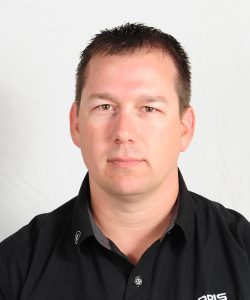
manufacturers to come up with a winning Pro sled, so those sleds will get more exotic as the factories chase the top level wins. How do you prevent one brand or another from coming out with an exotic – and expensive — race sled?
RAGER: “I think just our budgets alone, you know, we’re just not selling the sleds we were 20 or 15 years ago, so there’s no doubt that all race department budgets have been cut over the last 10 or 15 years. And also, we’re all publicly traded companies now, we don’t get to do the backdoor deals like they did back in the 1970s and ’80s when they were building all of these exotic magnesium sleds. It [now] has to get sold up through the ranks, the costs of these projects. I just don’t see that as really happening.”
SNOW GOER: Would there be any way to say to the manufacturers, “The costs of race sleds can exceed $11,000 in the next five years,” for example? Or would that fall into anti-trust regulations?
RAGER: “I would be interested in having those discussions. Would the other manufacturers? I don’t know – it’s something the manufacturers would have to discuss. I don’t know if it’s even feasible. In the short term, the next three, four or five years, I just don’t see that anybody is going to do that [build an expensive, exotic race sled]. If they do, well then the other manufacturers are going to have to step up their game and compete. If somebody was going to come out with a badass, carbon-fiber sled, it’s going to be a badass sled in the Pro Open class, and as manufacturers we’d still have to scramble and spend that money in the Pro Open class.
SNOW GOER: Yeah, but the guy who is racing juniors class isn’t going to have to pay for that sled.
RAGER: “True. That’s a risk that I know Polaris isn’t willing to take. I mean, we want to win more than the ISOC Pro Open championship. We want to win Pro Lite, Sport, Juniors, Women’s, and we want to do that on ECS, CSRA, SCMX, GNSS… It’s not just about ISOC nationals. Also, that brings up a point that this rule was passed by the affiliates unanimously. There are six snocross circuits in North America. Three of those six put proposals for a rule like this on the agenda. Five of the six voted “yes,” and GNSS abstained because they don’t have a Pro Open class. It says a lot to me when three of the affiliates had proposals for this.”
SNOW GOER: We had heard, second hand, that at the ISOC circuit meeting held a week before the ISR meeting that there was general agreement among the teams that ISOC was not going to support something like this. Was that inaccurate? And if not, what happened?
RAGER: “ISOC put a proposal like this on the table, but they kind of took everyone’s ideas and tried to make everybody happy. So it was a Pro Lite engine package but Pro Open chassis. And, one thing that’s not getting talked about is that all of the manufacturers agreed to the Pro Lite engine packages. Arctic Cat and Ski-Doo don’t want to say that right now because they are trying to defend their teams, but they were in favor of a Pro Lite engine package and getting rid of the pipes. When we were breaking down ISOC’s proposal, they wanted five things: Stock engine, open chassis, limited number of tracks you could use, limit to the number of sleds you could use and make it a current sled. We kind of went through as manufacturers and voted on each of those individually just to have a combined front for the affiliates if they asked us. But the manufacturers on the engine package were unanimous on going to a stock engine package. Ski-Doo was in favor of a stock chassis – they wanted to leave the rear suspension open and the front suspension open for development. But they 100% wanted a stock engine and stock chassis.
SNOW GOER: Overall, were you surprised by the reaction?
RAGER: “I was surprised it went through. I really was. And, people are bashing myself and Polaris saying that we kicked and cried and screamed [to get their way]. That’s not the case. I just brought up halfway through the year that Ken Avann was probably onto something, and that if we were smart we would be racing stock sleds. I did not lobby the affiliates, and I did not even go to the ISR advisory meeting – I was out of town. But, I did support it. I thought it was a good idea. But it wasn’t my idea, I didn’t actively lobby everybody for this, I stated my reasons why I thought it was good for the sport and why it would help and the affiliates voted it in. But, that’s fine – I’ve got thick skin, if people need somebody to blame, that’s fine. But it’s just not true that I ramrodded this or that I had a hidden agenda. Polaris won the X Games, the ISOC Pro Open championship, the CSRA Pro Open, ECS Pro Open, we got 12 of the 17 holesots in ISOC in Open – our last year’s mod sled worked really, really well, there’s no hidden agenda or that we’re trying to get more competitive in Pro Open by pushing this rule.
“Polaris’ decision to support this and think it’s a good idea is honestly based on what is best for the sport, long term… If a couple more teams go away, we could be down to five or six teams that are the only five or six that can even come close to building a sled to compete on, and if you’re not on one of those sleds you don’t have a prayer in the world, and it’s just those five or six teams competing with eight or 10 riders. I don’t think, long-term, that ISOC can survive and get the sponsors it has to have with eight or 10 riders. The racing might be phenomenal with those eight or 10, but I don’t think you can sell that as a long-term plan for success for racing. That’s my biggest fear if we didn’t make the big change is that ISOC as we know it could go away in three or four years. There would [still] be snocross racing, but it wouldn’t be at that level. I’d much rather race stock sleds at a high level than race incredibly trick mods in front of a small crowd and no TV package.
SNOW GOER: Is this absolutely, 100 percent, definitely the rule for snocross for this coming season, or could it still be changed?
RAGER: “This is absolutely, 100 percent a rule. It’s possible one of the affiliates could change their mind and run a specialty class that actually runs the Pro Open sleds, but I don’t see that happening because the affiliates unanimously voted in favor of it. It’s not like we as manufacturers got together and voted this rule in and the affiliates don’t agree with it and are going to run the class they want to run. The affiliates are the ones that made and passed the rule.”

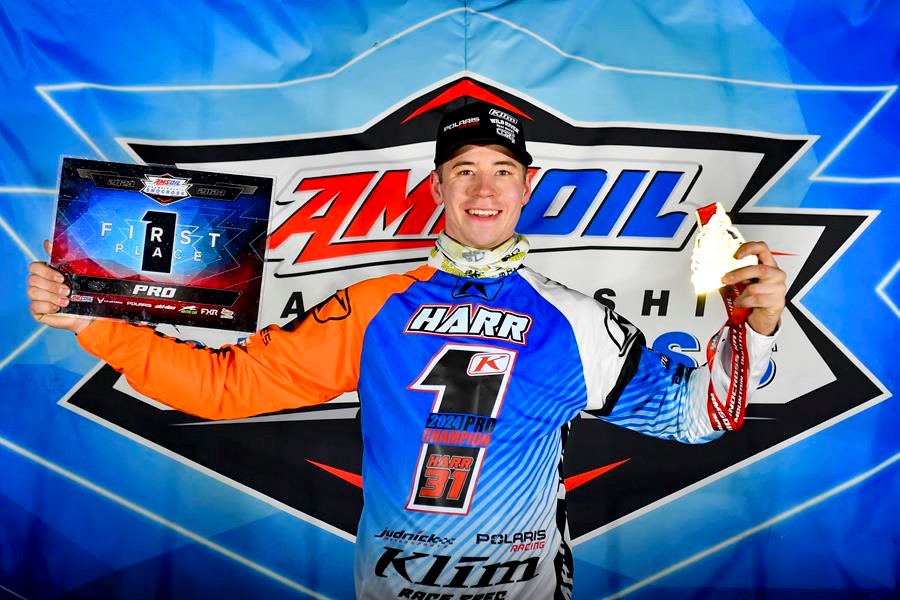
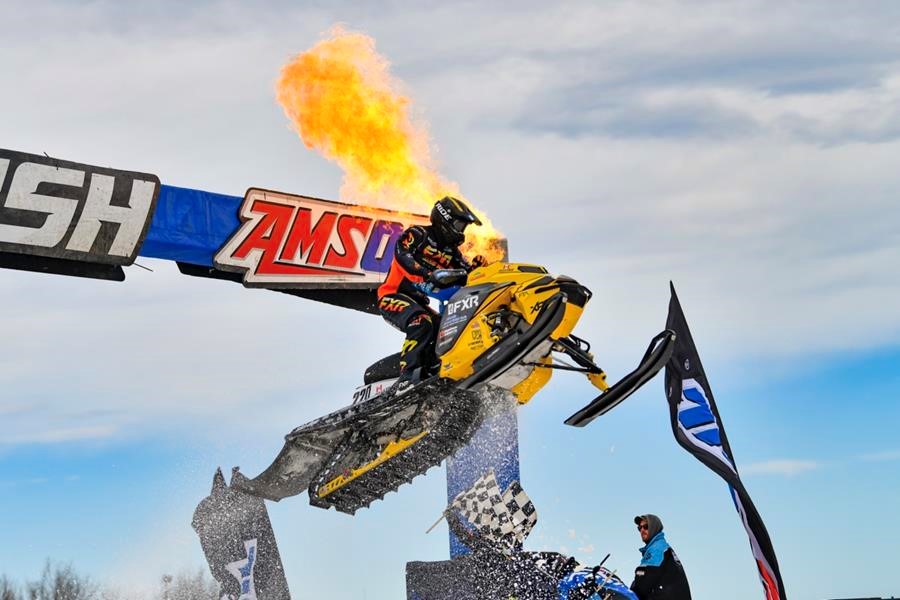
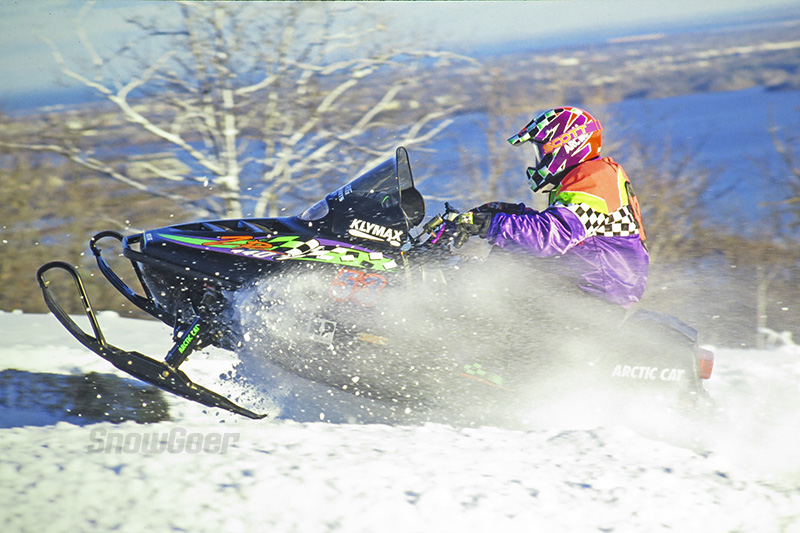
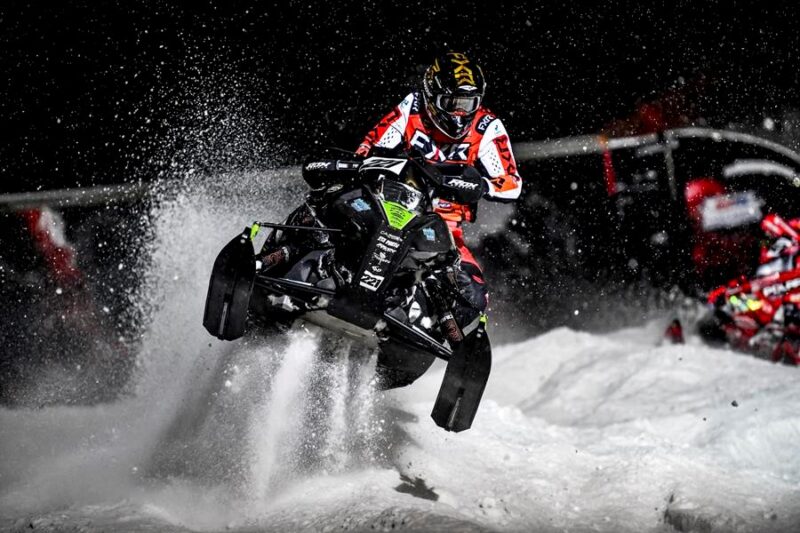
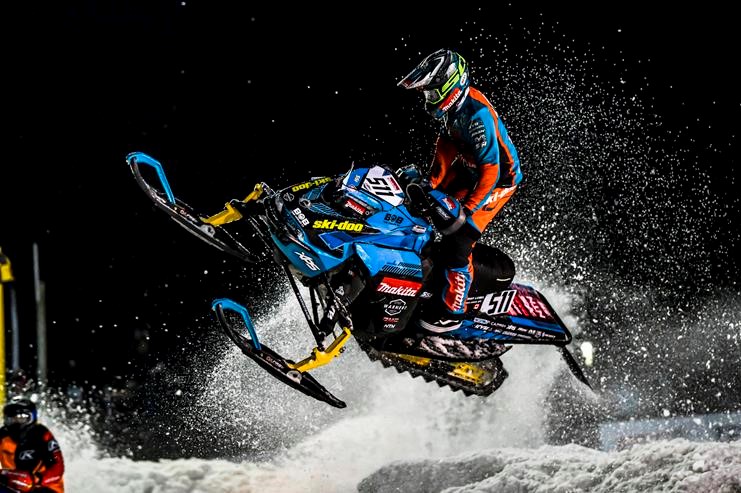
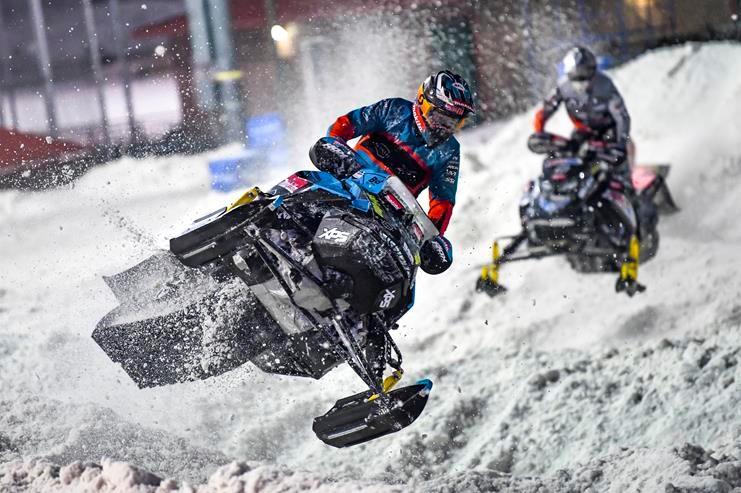
Ken Avann, the president of the Canadian Snowcross Racing Circuit in Canada, here.
It’s true, Pro Open will be replaced with a new “Pro” class: Here are some details:
All ISR affiliates have agreed to eliminate the Pro Open class. Pro racers will now compete with Pro-Lite Limited Build race sleds. Changes permitted include Aftermarket Silencers, Shocks, Skis, and Handlebars. The sled can also be reinforced and strengthened with added material.
This change is similar to Motocross racing where all competitors (Amateur and Pro) compete with limited build production race bikes all within a few horsepower of each other.
Benefits to this Change:
• All “Pro” racers will now compete on similar equipment permitting the team and racer with the most talent to win at any event in North America. The big dollar race teams no longer have a non attainable advantage over the independent racer.
• Racing will be tighter, speeds will be slightly less and safer.
• The change will encourage the OEM manufactures to build a better Limited Build race sled that all racers (Juniors, Sport, Pro-Lite & Pro) will benefit from.
• The cost to race in the new Pro class will be far less than the former Pro Open class.
• As Sport, Pro-Lite and Pro sleds are all similar, all parts are interchangeable reducing spare parts inventory.
• Race fuel for lower compression engines will be less expensive. Saving $2-3 thousand a year in fuel per racer.
• At the end of the season the sled can be sold to a Trail Sport, Novice, or Transition racer. A $5-7 thousand dollar return per sled to the racer or team..
• As the cost to race is less, the larger sponsored teams and manufactures could support more racers or provide better contingency programs.
• Pro and Pro-Lite racers use the same sleds so racers could now race in either class as approved by the specific race circuit.
I like it you will have more input from the OEMS and help more on a limited race sled that you can git.
I was a racer of go karts, motocross and snowmobiles when each of those sports were in their infancy.
In each case, the sport nearly died for 2 reasons; the big factories and distributors raced against amateurs and those with a lot of money could afford exotic machinery.
This new rule is the right thing.
As for travel costs, you could have regional championships and each region crowns a winner. Then each region sends 2-3 of their top riders to the national championships.
Pingback: Watch Now: Experts Debate Controversial Snocross Rule Change - AMSOIL Blog